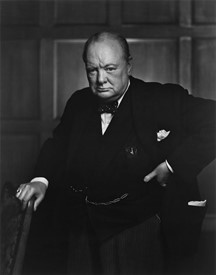Leadership styles are the patterns that a leader uses to command or influence his or her people. However, there is no such thing as a one-size-fits-all leadership style; each leader and company has its own set of styles and requirements. Autocratic, bureaucratic, and charismatic leadership are the three types of leadership most commonly found among leaders.
Apple is a company that I have admired for many years. Yes, their products are of the highest quality, but I have to admit that I admired Steve Jobs, Apple Inc.’s Co-Founder, Chairman, and CEO. I thought he was a revolutionary leader, even if I didn’t agree with his leadership style. (Kasim, 2020) cited Richard Branson saying “Steve Jobs’ leadership style was dictatorial; he had a fastidious eye for detail and surrounded himself with like-minded people who would follow in his footsteps, but what made him one of our generation’s best leaders?
1) Establishing objectives and training coworkers on how to achieve them
2) Everyone is aware of their responsibilities and roles.
3) Steve Jobs determines the vision, goals, and tasks.
The aspect of autocratic leaders that most people dislike is that if objectives or goals are not met, the implications for the team can be disastrous.

Winston Churchill is a well-known figure who does not require an introduction. He stood up to the role of Prime Minister on the eve of war (World War 2), when no one wanted to be in charge of Britain, and is still recognized as one of the best prime ministers in history. Churchill was a bureaucratic leader. Churchill saw that, like a business going through a difficult period owing to market conditions or other external factors, a sense of structure, careful control, and regular consistency was required to prevail (Fata, 2020). The issue with this leadership style is that it isn’t always the best kind of leadership that people respond to, and it might differ from one business to the next.
The term charismatic leader is frequently misunderstood because it sounds charismatic; certainly, it can be beneficial and transformative, but it can also be the opposite. Adolf Hitler, in my opinion, was a charismatic leader who was dominating, confident, and had strong convictions. Unlike ethical leadership, charismatic leadership makes no decisions about whether the vision is good or sustainable (Luenendonk, 2020).
I’ve been working for 18 years and have been in management for over ten of them. I had never given any thought to my leadership style before. I consider myself to be a mix of autocratic and bureaucratic in nature. I tend to be the one who establishes the vision and assigns the responsibilities, but I’m open to suggestions from my team members, and I prefer to be the one who makes the final decisions. Furthermore, if duties do not go as planned and the vision or scope of the project we are working on does not match the initial concept, I am likely to be dissatisfied. When there is a problem at work, on the other hand, I often find myself throwing myself into it and volunteering to take on the situation until it is resolved. I’m not sure my coworkers like me for it, but I relish the challenge that everyone else in the company believed was unachievable.
I believe that leadership is critical in every business; we must always have a leader who is paving the way for us to follow; nevertheless, I believe that leadership styles should be evaluated. Many factors, including culture, must be taken into account. Most importantly, I believe that someone like me needs to determine whatever leadership style is best for me and my business and then stick to it. Now I see that switching between leadership styles may not be the greatest strategy for me, my team, or my organization.


